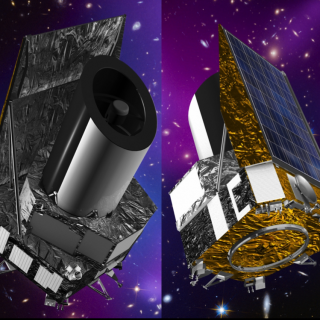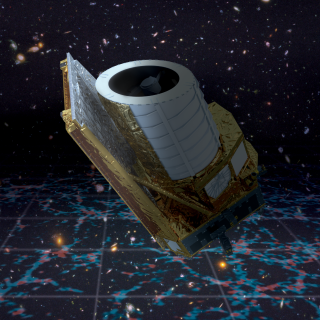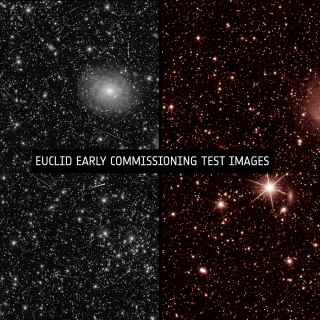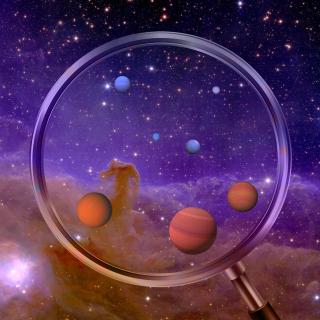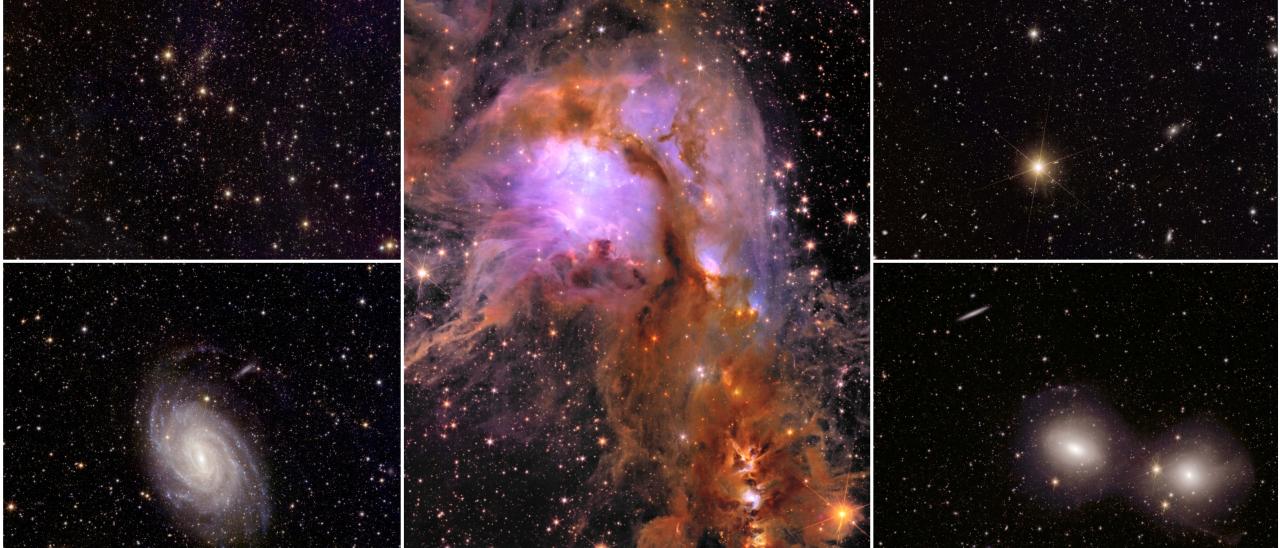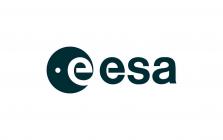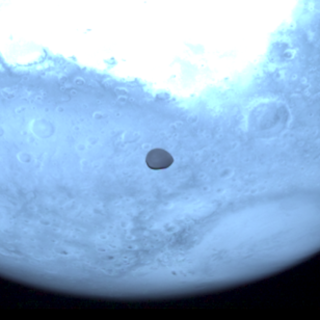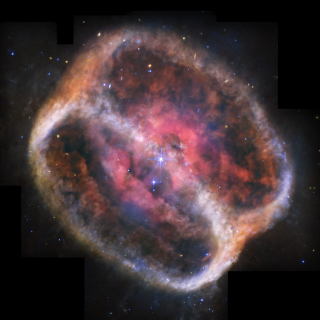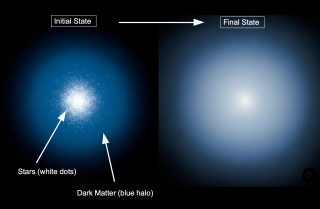The Euclid Consortium announces the publication of its first papers, demonstrating the space mission's ability to search for wandering planets, study the dark matter of galaxies and explore the evolution of the Universe. Five new images with unprecedented resolution are also published. Spain plays an important role in the Euclid mission where, in addition to being part of the consortium that has led the mission since its inception, it has also participated in the instrumental development of the project and contributes significantly to its scientific exploitation. The Instituto de Astrofísica de Canarias (IAC) is leading two of the results presented today.
The Euclid Consortium releases early scientific papers based on observations made by the Euclid telescope. A number of scientifically exciting targets have been observed and analysed by scientists of the Euclid Collaboration during an Early Release Observations phase, giving a glimpse of the unprecedented power of this telescope meant to provide the most precise map of our Universe over time.
The scientific data is accompanied by five new outstanding images as part of Euclid’s Early Release Observations. In addition to these first and promising scientific results, the Consortium also publishes on this day the mission’s reference papers that confirm the outstanding performance of Euclid. he treasure trove comes less than a year after the space telescope’s launch, and roughly six months after it returned its first full-colour images of the cosmos.
“The first Euclid images are astonishing. They demonstrate the huge science potential of Euclid, covering large fields with unprecedented resolution. Although originally thought as a mere showcase of the mission potential, they have led to many interesting scientific results now being published”, says Francisco Castander, Institute of Space Sciences (ICE-CSIC) and Institute of Space Studies of Catalonia (IEEC) researcher.
"While visually stunning, the images are far more than beautiful snapshots; they reveal new physical properties of the Universe thanks to Euclid’s novel and unique observing capabilities," explains Rafael Rebolo, director of the IAC, member of the Euclid consortium and co-investigator of the mission.
The full set of early observations targeted 17 astronomical objects, from nearby clouds of gas and dust to distant clusters of galaxies, ahead of Euclid’s main survey. This survey aims to uncover the secrets of the dark cosmos and reveal how and why the Universe looks as it does today.
Key IAC participation
Euclid produced this early catalogue in just a single day, revealing over 11 million objects in visible light and 5 million more in infrared light. This catalogue has resulted in significant new science, which are detailed further in 10 accompanying papers released by the Euclid collaboration together with five key reference papers about the Euclid mission.
Among the scientific papers, the publication focused on Euclid's ability to search for star-forming regions for free-floating ‘rogue’ planets, which was led by Eduardo Martín Guerrero de Escalante, research professor at the IAC and one of Euclid's two Independent Legacy Scientists. This work is a showcase of the power of the Euclid mission to provide the area and depth required to explore the very low-mass population including free floating planets of nearby star-forming regions and very young open clusters.
“Our first paper has focused on developing a method to carefully select new-born free-floating planets down to a few Jupiter masses with Euclid, which is like finding needles in a haystack. Dozens of dark free-floating planets lurk in the Euclid images of the Messier 78 and Horsehead regions, and the challenge is to distinguish them from millions of background stars and extragalactic objects that can display all kinds of colours” says Martin Guerrero de Escalante.
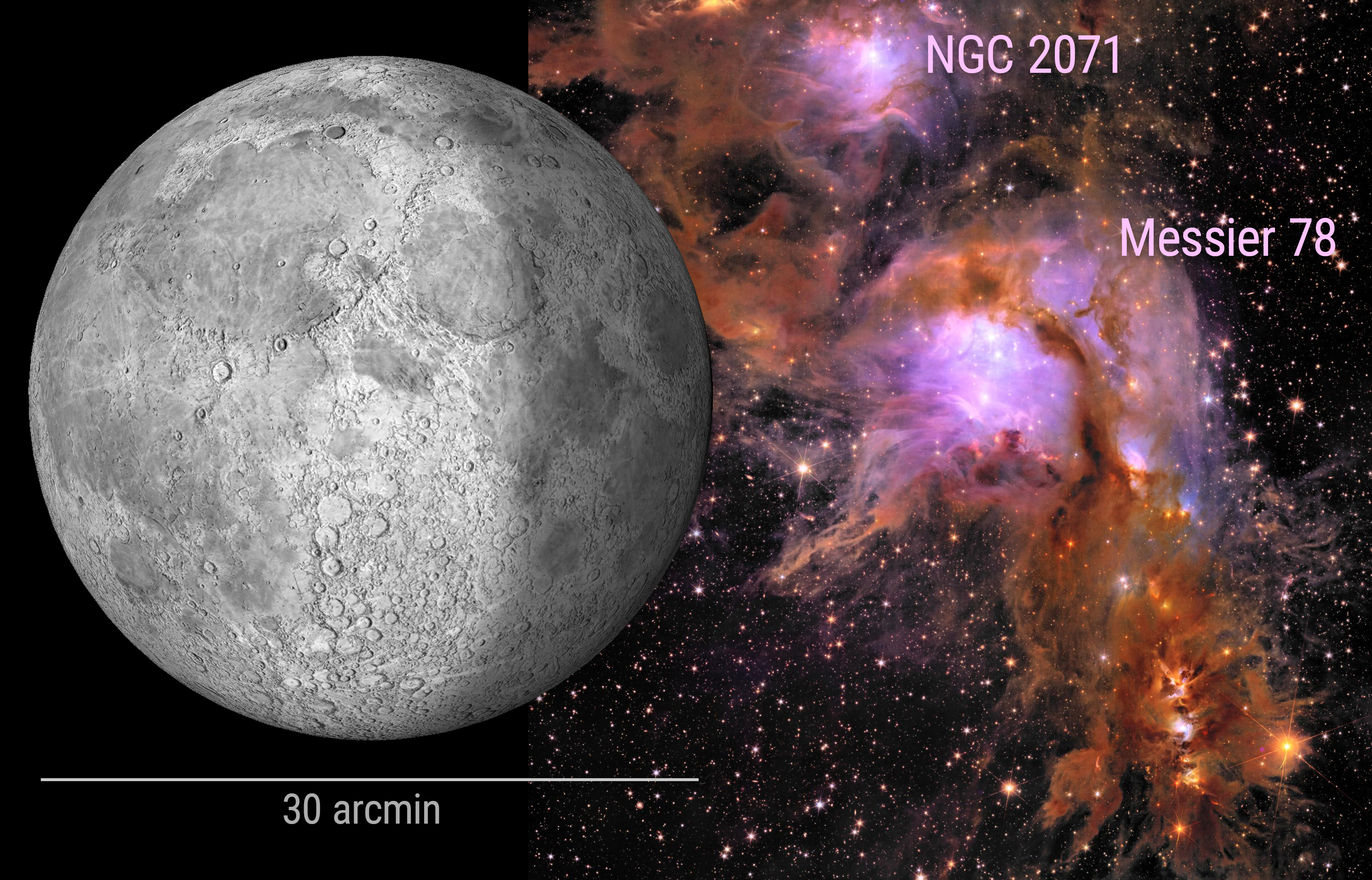
Another interesting result comes from the study of the intracluster light and intracluster globular clusters of the Perseus cluster. Intracumulus light is also called diffuse or "ghost" light because it is a very faint glow from stars wandering in intergalactic space without being gravitationally bound to any galaxy. Based on the characteristics of this light, the astronomers involved in the study suggest that the stars have been torn from the outskirts of the galaxies.
Another surprising finding is that these stars, which are expected to orbit the largest galaxy in the cluster, instead orbit a point between the two most luminous galaxies. This novel observation suggests that Perseus may have recently merged with another group of galaxies, causing a gravitational perturbation that led to the observed misalignment. Mireia Montes, IAC researcher involved in the study pinpoints that, "For the first time, it has been possible to study this light and its globular clusters down to distances of about 2 million light years (600 kpc). This work was only possible thanks to Euclid’s sensitivity and sharpness”.
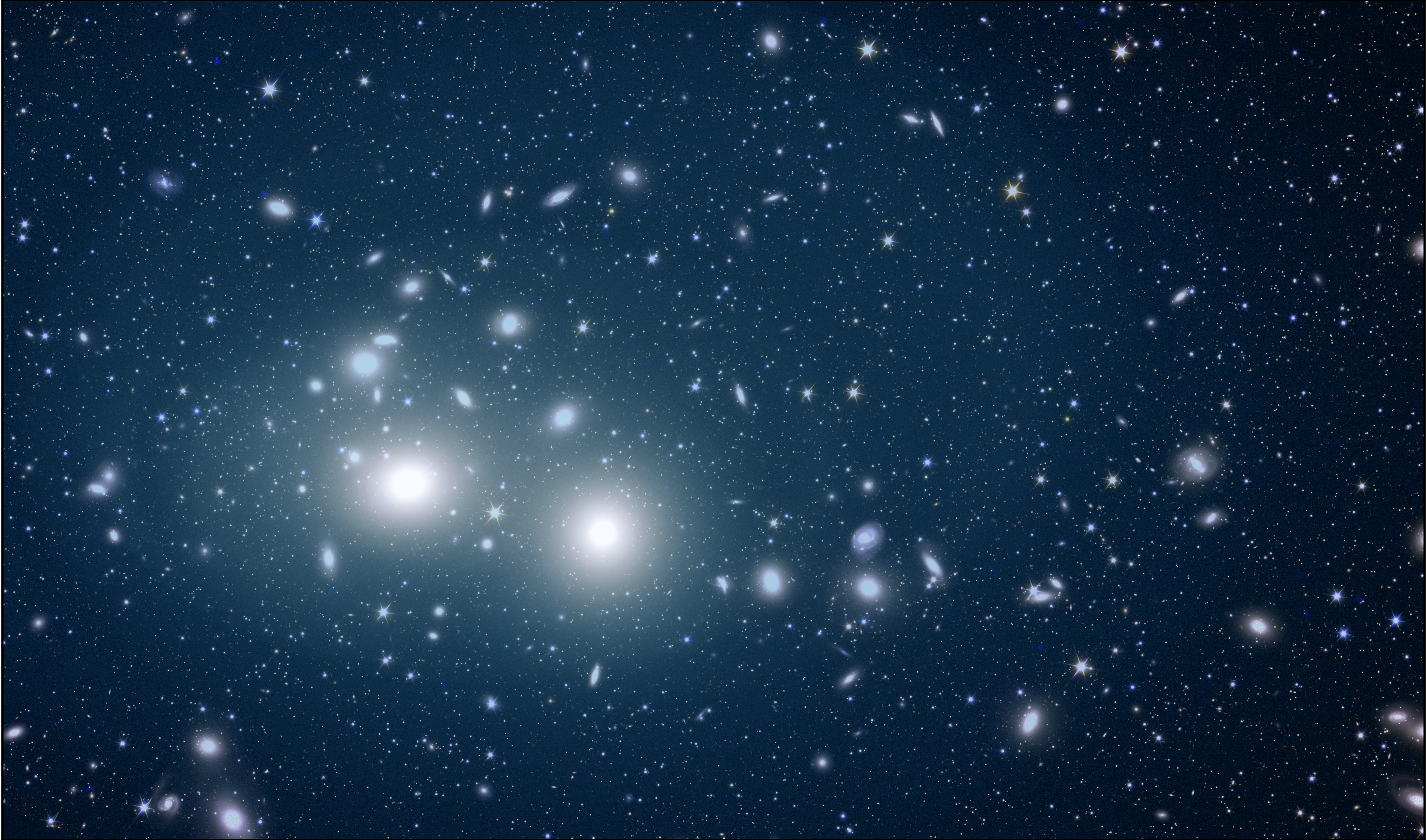
Outstanding Spanish contribution
Other Spanish institutions and research staff in the Euclid Consortium have also made important contributions in this Early Release Observations phase. Among them, José María Diego, researcher at the Institute of Physics of Cantabria (IFCA CSIC-UC), has participated in the study of one of the objects studied by Euclid, the so-called Abel 2390, a gravitational lens or a massive galaxy cluster. In this work, the IFCA CSIC-UC researcher has managed to obtain the first map of the distribution of matter around and in the centre of this cluster (mostly dark matter), which had never been studied in such detail until now.
Furthermore, the additional five Reference publications provide confirmation of Euclid’s outstanding performance. Among them, the Euclid Flagship simulation, led by ICE-CSIC and IEEC researchers Francisco Castander and Pablo Fosalba, is presented. The Euclid Flagship simulation is a simulated catalogue of billions of galaxies designed to prepare the scientific exploitation for the Euclid mission. The catalogue has been generated using the Euclid Science Data Center, hosted at the Port d'Informació Científica (PIC), on a high performance big data platform that enables generating a 15 TB catalogue of 5 billion galaxies in 3 hours. "This is the most detailed and complete simulation of a galaxy survey ever carried out," says Fosalba.
Other reference publications provide a summary of the overall Euclid mission and goals as well as describing Euclid’s instruments’ specifications, design, development, and roles within the mission.
Otras publicaciones de referencia proporcionan un resumen de la misión y los objetivos generales de Euclid, además de describir las especificaciones, el diseño, el desarrollo y las funciones de los instrumentos de la misión.
¨With just these few magnificent, large field-of-view images at unprecedented resolution, we have already made numerous new findings about the characteristics of our universe. This demonstrates that, after its six years of observation, Euclid will not only help us understand the Dark Universe, but will also leave behind material that will enable future generations of scientists to make wonderful astronomical discoveries,¨ adds Institute of High Energy Physics (IFAE) researcher Cristobal Padilla.
The Spanish contribution to the payload of the Euclid telescope has been organised around two nodes that joined the scientific consortium in 2010. On the one hand, ICE-CSIC, IFAE, IEEC, PIC, have been responsible for the design, construction, assembly and validation tests of the NISP instrument filter wheel, as well as the cosmological simulations of the mission.
On the other hand, IAC and the Universidad Politécnica de Cartagena (UPCT) have been in charge of the electronic unit that controls the NISP instrument and its start-up software. In addition, both nodes participate in several teams preparing the scientific exploitation of the telescope's data. In fact, the IAC's technological participation has been awarded the EUCLID Consortium EULER Award for its outstanding contribution to the instrumentation of the mission.
La contribución española a la carga útil del telescopio Euclid se ha organizado en torno a dos nodos que se unieron al consorcio científico en 2010. Por una parte, ICE-CSIC, IFAE, IEEC, PIC han sido responsables del diseño, construcción, ensamblaje y tests de validación de la rueda de filtros del instrumento NISP, así como de las simulaciones cosmológicas de la misión.
Besides, both nodes participate in several teams within the Euclid Science Ground Segment (SGS), responsible for the processing of the telescope data and delivery of the data products to be used for the scientific exploitation. In total, around 100 scientists from more than 20 Spanish institutions are organising the scientific exploitation of the mission to unravel the mysteries of the dark universe.
Performance verification tests of VIS and NISP instruments indicate that both are operating at fully in line with expectations. Rafael Toledo, researcher at the UPCT and head of the Infrared Instrument Control Unit (NISP), highlights that ¨the capabilities and reliability of the infrared instrument controlled by the unit responsible for the UPCT are absolutely impressive.¨
New images of Euclid
The images obtained by Euclid are at least four times sharper than those we can take from ground-based telescopes. They cover large patches of sky at unrivalled depth, looking far into the distant Universe using both visible and infrared light. The images from this phase of the mission's early observations are of the galaxy cluster Abell 2390, the Messier 78 nebula, the spiral galaxy NGC 6744, the galaxy cluster Abell 2764 and the Dorado galaxy group.
Images of Euclid's Early Release Observations
Science papers and data
ESA YouTube livestream (12:00–13:00)
Contactos en el IAC:
Eduardo Martín Guerrero de Escalante, ege [at] iac.es (ege[at]iac[dot]es)
Mireia Montes, mireia.montes [at] iac.es (mireia[dot]montes[at]iac[dot]es)
Rafael Rebolo, rrl [at] iac.es (rrl[at]iac[dot]es)
Carlos Gutiérrez, carlos.gutierrez [at] iac.es (carlos[dot]gutierrez[at]iac[dot]es)
Marc Huertas-Company, mhuertas [at] iac.es (mhuertas[at]iac[dot]es)
Otros contactos:
Francisco Castander (ICE-CSIC, IEEC), fjc [at] ice.csic.es (fjc[at]ice[dot]csic[dot]es)
Cristobal Padilla (IFAE), Cristobal.Padilla [at] ifae.es (Cristobal[dot]Padilla[at]ifae[dot]es)
Rafael Toledo (UPCT), Rafael.Toledo [at] upct.es (Rafael[dot]Toledo[at]upct[dot]es)
Jorge Rivero González (contacto para prensa en España del Consorcio Euclid), rivero [at] ice.csic.es (rivero[at]ice[dot]csic[dot]es)
